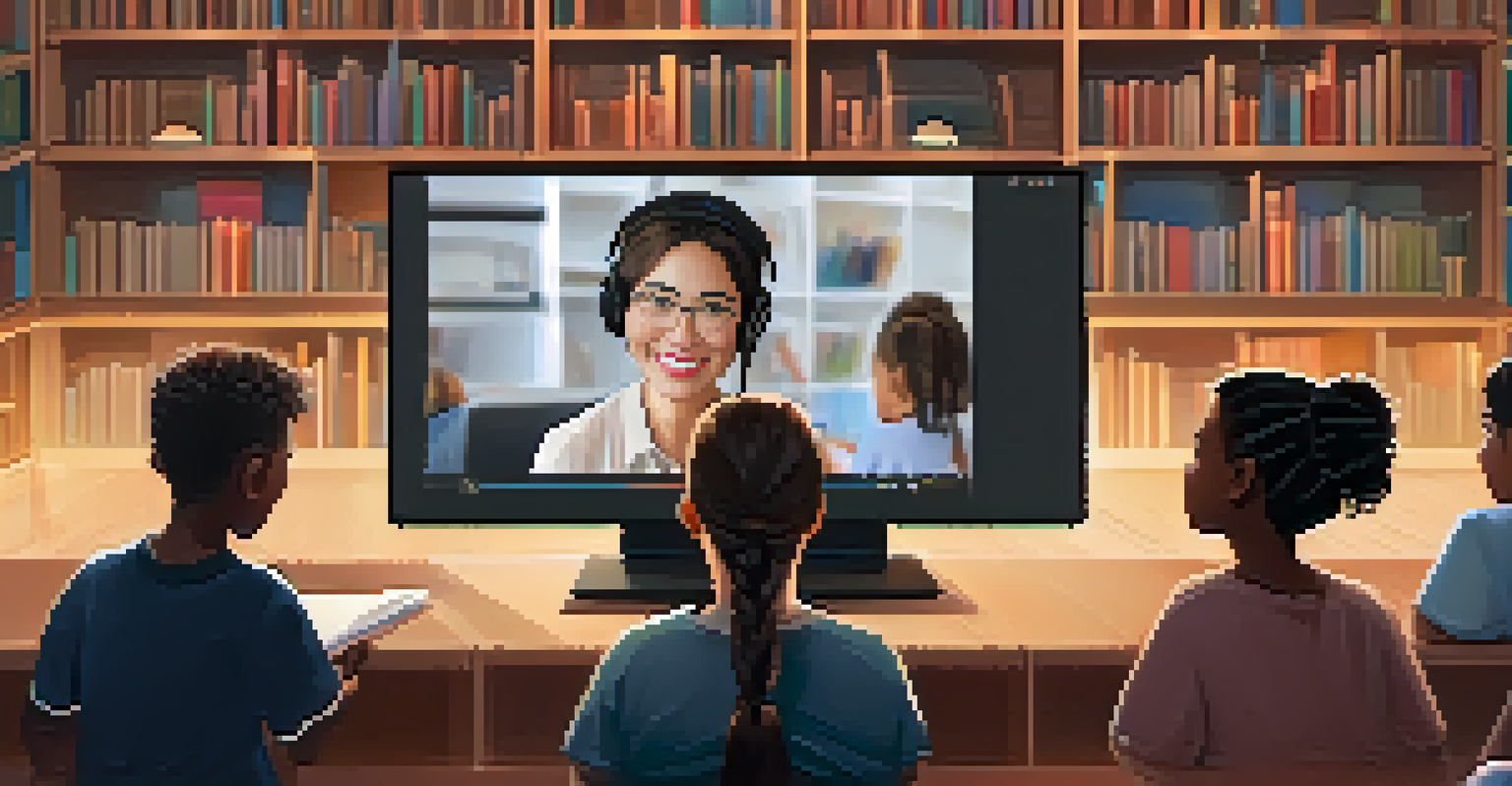Building Emotional Connections in Online Learning

Understanding Emotional Connections in Learning
Emotional connections are the invisible threads that bind learners to their educational journeys. In online learning, where face-to-face interactions are limited, fostering these connections becomes even more crucial. When students feel emotionally connected, they are more likely to engage with the material and persist through challenges.
Education is the most powerful weapon which you can use to change the world.
Think of emotional connections like the roots of a tree; they provide stability and nourishment. Without robust roots, a tree may struggle to grow, just as students may struggle to thrive in an online environment without emotional support. This connection can enhance motivation and create a positive learning atmosphere.
Recognizing the importance of these emotional ties is the first step in building a successful online learning experience. Educators can create an environment where students feel valued and understood, leading to improved outcomes and a richer educational experience.
Creating a Welcoming Online Environment
A welcoming online environment sets the stage for emotional connections. This can be achieved by designing user-friendly platforms that encourage interaction among students and instructors. Simple touches, such as personalized greetings or icebreaker activities, can help students feel more at home.

Imagine entering a cozy café where everyone knows your name; that’s the kind of atmosphere we want to create online. By fostering a sense of belonging, students are more likely to engage with their peers and instructors, leading to deeper connections. This environment can also alleviate feelings of isolation that often accompany online learning.
Emotional Connections Boost Learning
Fostering emotional ties in online education enhances student engagement and persistence.
Ultimately, a welcoming environment is about more than just aesthetics; it’s about creating a community where students feel comfortable sharing their thoughts and experiences. This sense of community can significantly enhance emotional ties and promote collaborative learning.
Encouraging Student Interaction and Collaboration
Interaction and collaboration are key components in building emotional connections among students. When learners work together on projects or participate in discussion forums, they create bonds that enhance their learning experience. These interactions can lead to friendships that extend beyond the virtual classroom.
The beautiful thing about learning is that no one can take it away from you.
Think of group projects as team sports; working together towards a common goal fosters camaraderie and shared experiences. Online tools like breakout rooms and collaborative platforms can facilitate these interactions, allowing students to engage meaningfully. As they navigate challenges together, they develop a sense of trust and mutual respect.
Encouraging collaboration not only helps students build relationships but also enhances their learning outcomes. When students feel connected to their peers, they're more likely to contribute and participate actively, which can lead to a richer educational experience.
Utilizing Personalization to Foster Connections
Personalization in online learning can significantly enhance emotional connections. By tailoring content and communication to individual learner needs, educators show students that they are valued. This personal touch can make a world of difference, especially for those who may feel overlooked in a larger online setting.
Consider how personalized recommendations on streaming services keep viewers engaged; a similar approach can be applied in education. By offering customized learning paths or feedback, educators can connect with students on a deeper level. This not only boosts engagement but also fosters a sense of ownership over their learning.
Personalization Enhances Engagement
Tailoring content to individual learners helps them feel valued and boosts their investment in education.
Incorporating personalization into the learning experience can lead to stronger emotional ties. When students feel that their unique perspectives and needs are recognized, they are more likely to invest in their education and connect with their peers.
The Role of Empathy in Online Learning
Empathy plays a crucial role in building emotional connections in online learning. When educators demonstrate understanding and compassion towards their students, it creates a safe space for them to express their feelings and concerns. This emotional support can have a profound impact on a student’s overall experience.
Think of an empathetic teacher as a guiding light in a foggy landscape; their understanding can help students navigate through uncertainties. By actively listening and responding to students' needs, educators can foster trust and openness. This connection not only enhances the learning experience but also promotes resilience in facing challenges.
Ultimately, empathy can bridge the gap created by physical distance in online learning. When students feel seen and heard, they are more likely to engage deeply with their education and form lasting connections with their peers and instructors.
Incorporating Storytelling to Enhance Engagement
Storytelling is a powerful tool for building emotional connections in online learning. By sharing personal anecdotes or case studies, educators can create relatable moments that resonate with students. This narrative approach can make lessons more engaging and memorable.
Imagine a teacher sharing a story about overcoming a difficult challenge; this not only humanizes the instructor but also inspires students facing their own struggles. When learners can relate to the stories being told, they are more likely to engage with the material and feel connected to their instructor. Stories can evoke emotions that make the learning experience more impactful.
Empathy Builds Trust in Learning
Demonstrating empathy creates a supportive environment that encourages student participation and connection.
Incorporating storytelling into lessons can also encourage students to share their own experiences. This exchange can deepen relationships and foster a sense of community, further enhancing emotional connections within the online learning environment.
Feedback as a Tool for Building Connections
Feedback is an essential aspect of online learning that can strengthen emotional connections. Timely and constructive feedback shows students that their efforts are recognized and valued. It creates a dialogue that encourages growth and fosters a sense of belonging.
Think of feedback as a bridge connecting students to their instructors; it facilitates communication and understanding. When educators provide thoughtful feedback, it not only guides students in their learning journey but also reassures them of their progress. This connection can lead to increased motivation and a stronger commitment to learning.

Moreover, encouraging peer feedback can enhance connections among students. When learners share insights and support each other, it builds a collaborative atmosphere that fosters lasting relationships.